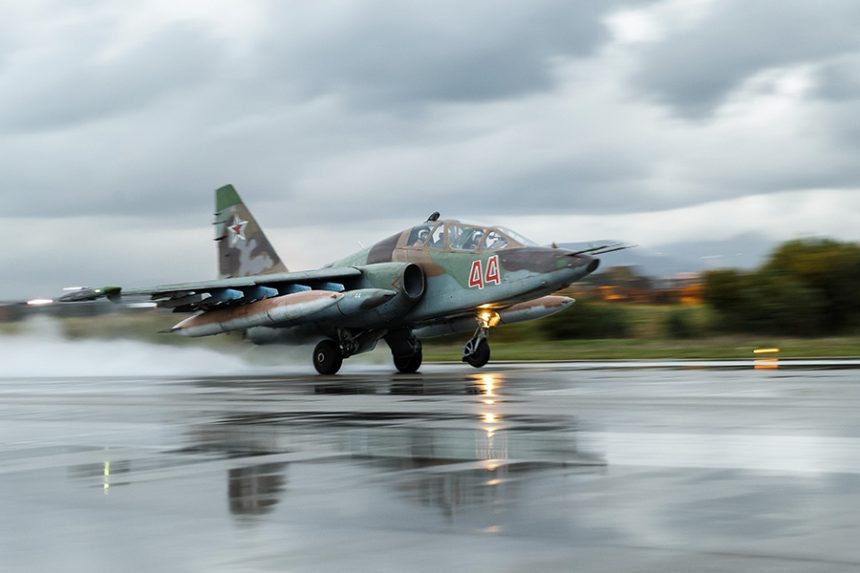The Russian Air Force Su-25 Frogfoots were pretty busy during their Syrian deployment.
On Mar. 16, the Russian Aerospace Forces (RuAF) welcomed the return of their Sukhoi Su-25 attack aircraft from Hmeymim airfield, in Syria, to their home base in the Krasnodar region.
As reported by the Tass News Agency, during the ceremony, Alexander Galkin, the Russia’s Southern Military District commander, said the Frogfoots flew more than 1,600 sorties and dropped around 6,000 bombs since when Russian aircraft began missions against terrorists in Syria on Sep. 15, 2015.
“After a prolonged assignment away from home we are welcoming back our best pilots. They have coped with all of their tasks. Over the past six months they flew 1,600 sorties in adverse conditions spending more than 1,000 hours in the sky over Syria to have dropped about 6,000 bombs on the terrorists,” Galkin said.
Noteworthy, the Sukhoi Su-34 bombers have been the first RuAF aircraft to leave Hmeymim airbase on Mar. 15, followed by the Su-24 and Su-25 attack jets which left the airfield later on the same day.
A we have already explained, unlike the U.S. led coalition combat planes which rely on accurate precision guided munitions (PGMs), the Russian aircraft made an extensive use of unguided bombs, such as the OFAB-250 which along with S-13 rockets represented the main weapon used by the Frogfoots against terrorists targets in Syria.
Nevertheless also the RuAF attack jets used several kinds of PGMs. These weapons, which belong to the KAB-500 guided bomb series, include the KAB-500KR TV guided bomb, the KAB-500L laser guided bomb and the GLONASS-guided KAB-500S-E that like the American JDAM depends on a GPS guidance system.
These smart weapons can arm the Su-24, the Su-25, the Su-30 and the Su-34: all the fighter bomber types that took part in the Russian air campaign in Syria.
Image credit: Russian MoD
















